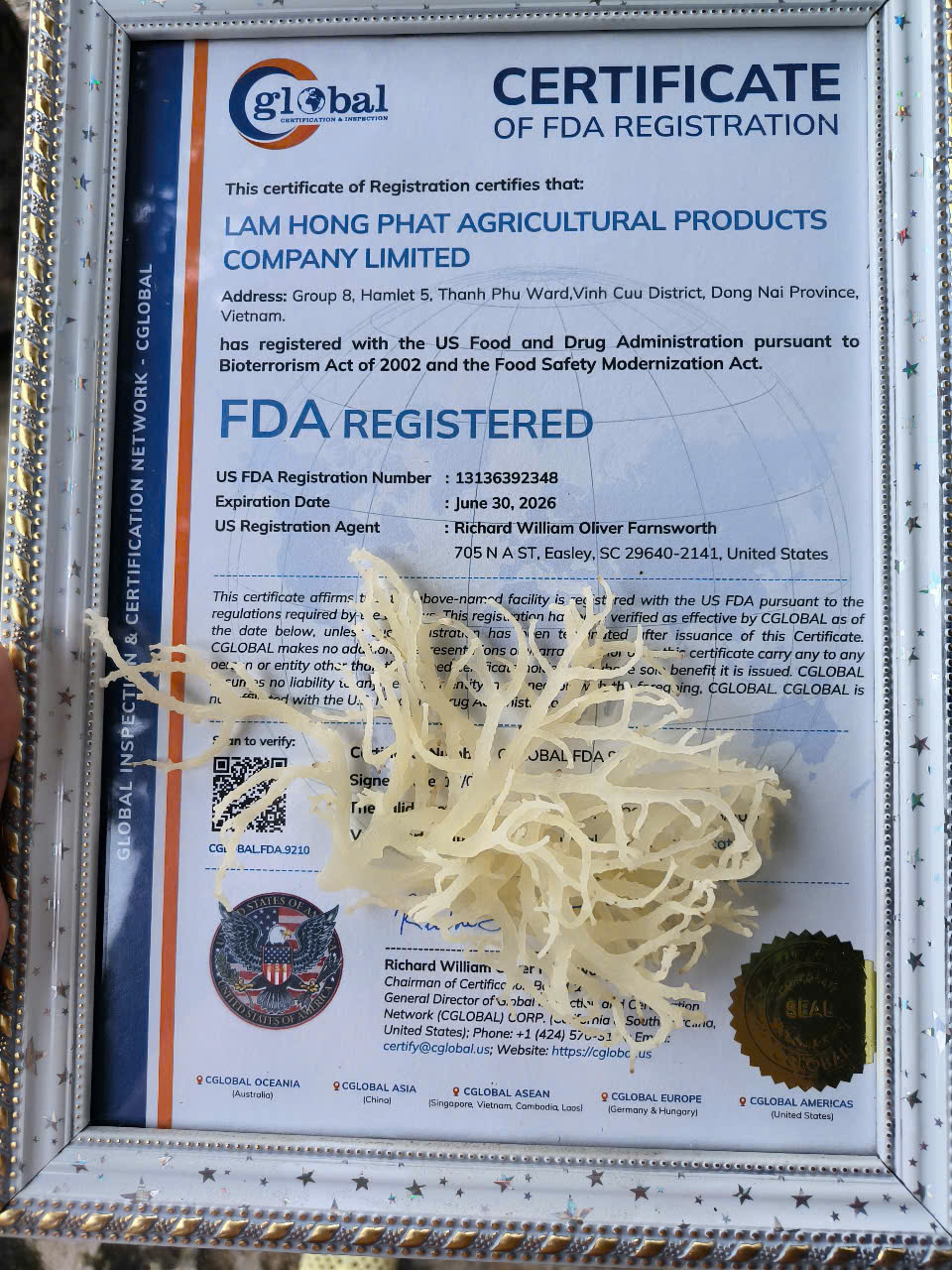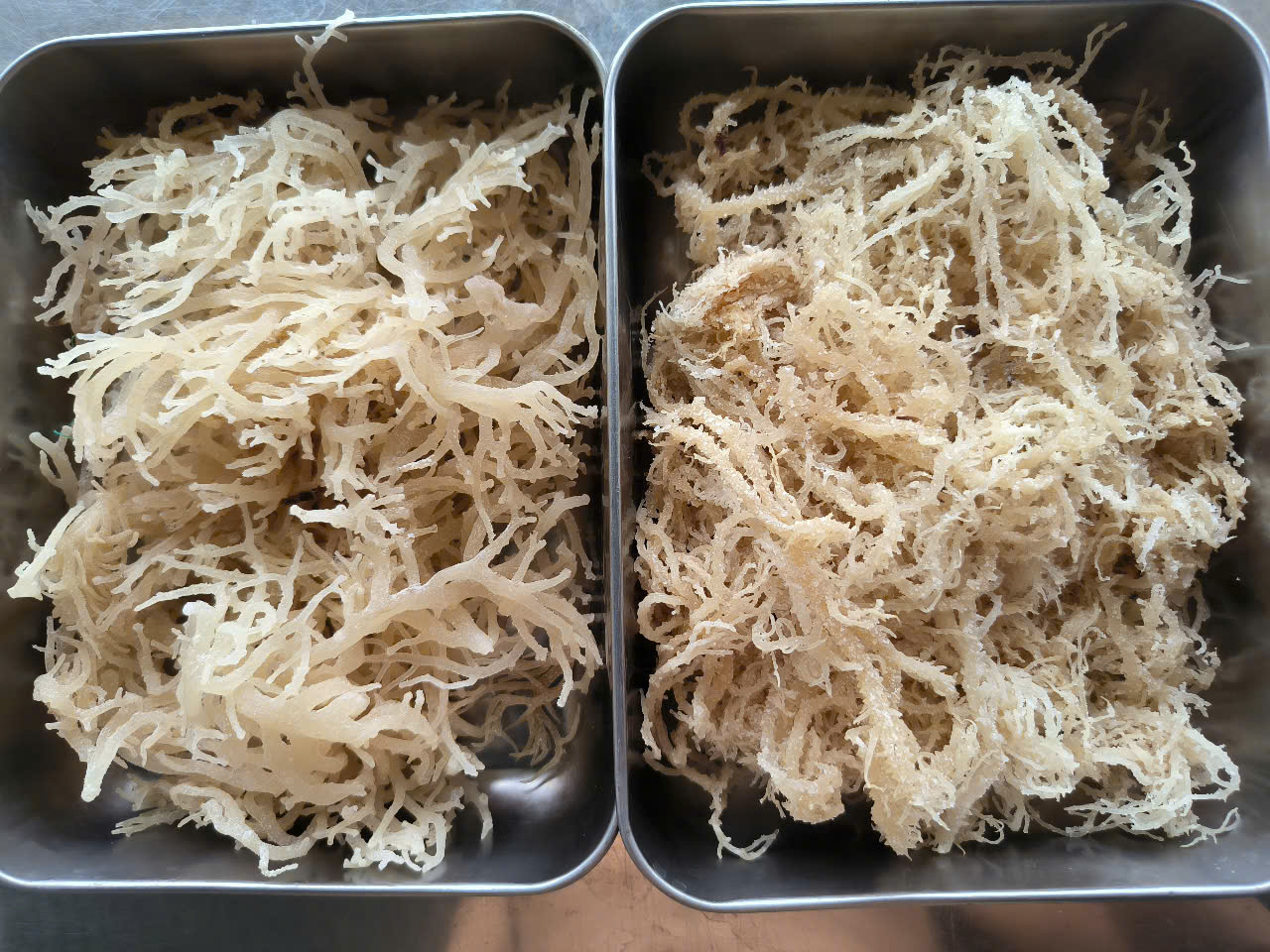Eucheuma cottonii seaweed differs significantly from other common seaweed varieties such as green and brown seaweed - in terms of nutritional composition, functional properties, and industrial applications. As a type of red seaweed, it typically contains higher levels of protein, particularly in species like Porphyra spp., with protein content comparable to well-known plant-based sources such as soybeans.
In addition, red seaweed is rich in soluble dietary fiber and essential minerals, most notably iodine, which is often found in higher concentrations than in other seaweed types.
From a biochemical perspective, red seaweed also contains a greater amount of EPA (eicosapentaenoic acid), a vital omega-3 fatty acid, compared to green seaweed.
Given these advantages, the question arises:
Which industries stand to benefit the most from red seaweed applications, and what is its long-term economic potential?
Furthermore, for companies considering red seaweed in their formulations, is it more effective to invest in cultivating their own supply—or to collaborate with specialized, experienced suppliers?
Let’s explore these questions in detail in the following sections.

Red Seaweed from Lam Hong Sea Moss
1. What is Eucheuma Cottonii seaweed?
Eucheuma cottonii, a type of red seaweed (phylum Rhodophyta), belongs to a diverse group of marine algae known for their distinctive features and broad range of applications. These algae are capable of photosynthesis, lack flagella, and contain unique pigments such as chlorophyll a, chlorophyll d, carotenoids, and phycobiliproteins (including phycoerythrin, phycocyanin, and allophycocyanin).
Thanks to these pigments composition, red seaweed can thrive at greater ocean depths than most other types of algae. It is also recognized for its high protein content, unique polysaccharides, and various bioactive compounds such as monoterpenes, diterpenes, acetogenins, and sesquiterpenes.
1.1 Key characteristics of red seaweed:
Varied coloration: Despite being called "red" seaweed, species can range in color from bright red and reddish-brown to deep blue-black, depending on their pigment composition.
Deep-water adaptability: Thanks to their specialized pigments, Eucheuma cottonii seaweed can absorb light efficiently in low-light environments, allowing them to grow at deeper ocean levels than green or brown algae.
High protein content: Eucheuma cottonii seaweed generally has a higher protein concentration than green or brown seaweed, though this can vary with seasonality and environmental conditions.
Rich in soluble fiber: It contains elevated levels of soluble dietary fiber, which contributes to better digestive health and supports gut microbiota balance.
Source of bioactive compounds: Eucheuma cottonii seaweed contains valuable bioactive compounds such as monoterpenes, diterpenes, acetogenins, and sesquiterpenes, many of which have demonstrated health-promoting effects.
Antioxidant properties: Rich in natural antioxidants, red seaweed can help protect the body from oxidative stress caused by free radicals.

Certifications for Lam Hong Sea Moss seaweed products
Anti-inflammatory effects: Certain bioactive molecules found in red seaweed may help reduce inflammation, potentially benefiting conditions related to chronic inflammation.
Immune system support: Regular consumption of red seaweed may help strengthen the immune response and enhance the body’s defense against infections.
Digestive health benefits: The fiber content supports intestinal health, promotes regular bowel movements, and can aid in maintaining a balanced microbiome.
Mineral-rich composition: It is an excellent source of essential minerals, particularly iodine, which is vital for thyroid health and overall metabolic function.
In summary, Eucheuma cottonii seaweed is not only a nutrient-dense marine resource but also a highly promising ingredient for a variety of medical, nutritional, and industrial applications. Its value has been consistently supported by emerging scientific research and practical success in B2B product development.
1.2 Eucheuma cottonii vs. common seaweeds: A functional comparison
|
Criteria |
Eucheuma Cottonii (Red seaweed) |
Common Seaweeds (Wakame, Nori, Kombu) |
|
Type |
Red seaweed |
Brown & red seaweeds |
|
Structure |
Thick, fibrous, low-moisture |
Thin, soft, higher moisture content |
|
Stability |
High stability during drying and storage |
Prone to degradation and spoilage if not processed quickly |
|
Polysaccharide content |
Very high (especially natural carrageenan-like content) |
Moderate to low depending on type |
|
Mineral |
Rich in calcium, magnesium, zinc, potassium |
Rich in iodine but varies by type |
|
Hydration capacity |
High - ideal for gels and moisture-retention |
Lower - best used fresh |
|
Shelf-life (dried) |
Long and stable |
Shorter, prone to humidity damage |
|
Industrial applications |
Ideal for B2B food, skincare, and pharma |
Primarily culinary or direct-consumption |
|
Processing yield |
High – minimal waste during extraction or transformation |
Lower yield due to softer texture and moisture content |

Images of Lam Hong Sea Moss Seaweed Products in Storage
2. Superior nutritional and bioactive composition
One of the most compelling advantages of Eucheuma cottonii seaweed lies in its exceptional concentration of mineral and bioactive compound. As a red seaweed, Eucheuma cottonii is particularly rich in calcium, magnesium, potassium, iron, and zinc, essential minerals that are vital not only for human health but also for use in functional food, nutraceutical, and skincare formulations.
By contrast, common seaweeds such as wakame or nori offer decent mineral content, but their nutrient density tends to vary due to higher moisture levels and faster degradation post-harvest. In comparison, Eucheuma cottonii’s fibrous low-moisture structure helps preserve its mineral integrity during drying and storage, making it far more suitable for industrial-scale processing.
In addition to its mineral content, Eucheuma cottonii also contains naturally occurring sulfated polysaccharides (precursors to carrageenan), which contribute to its well-documented antioxidant, anti-inflammatory, and moisture-retaining properties. These compounds are highly valued in the production of gels, topical creams, and pharmaceutical stabilizers.
Thanks to its consistent and concentrated bioactive profile, Eucheuma cottonii is a powerful asset in clean-label product development, significantly enhancing the functional value of finished goods, especially in the food, cosmetic, and wellness industries.
3. Applications of red seaweed
In terms of applications, Eucheuma cottonii seaweed is widely recognized for its gelling properties, primarily due to the presence of polysaccharides such as agar and carrageenan. These compounds are extensively used across the food, pharmaceutical, and biotechnology industries for their thickening, stabilizing, and emulsifying functions.
Additionally, Eucheuma cottonii seaweed has been studied for its ability to absorb heavy metals, highlighting its potential role in wastewater treatment and environmental remediation.
In contrast, brown seaweed generally contains lower levels of protein but is valued for its abundance of polysaccharides and prebiotic compounds that support gut health. Meanwhile, green seaweed, while relatively high in protein, can pose environmental risks, such as green tides, when its growth becomes excessive and uncontrolled.
Each type of seaweed has its own strengths, and selecting the right one depends on your business’s specific goals, formulation needs, and market positioning.

Harvesting of Lam Hong Sea Moss Seaweed Products
Each type of seaweed possesses distinct characteristics and advantages that make it suitable for different applications. Eucheuma cottonii seaweed stands out for its high concentrations of protein, fiber, and essential minerals, making it especially suitable for applications that demand nutritional density and clean-label functionality.
By comparison, brown and green seaweeds offer unique value through their prebiotic compounds and gelling properties. Naturally, given its superior nutritional and functional benefits, Eucheuma cottonii seaweed is generally more expensive than other varieties. Therefore, businesses should consider their specific goals and intended use when selecting the most appropriate seaweed product.
4. Should you invest in Eucheuma cottonii farming or partner with a specialized supplier?
Establishing your own Eucheuma cottonii (red seaweed) farm should only be considered if your business has a consistently high and long-term demand for red seaweed. In reality, building and maintaining a cultivation operation requires substantial capital investment, technical expertise, and operational capacity. Without the necessary knowledge, infrastructure, and human resources, the total costs can easily surpass those of sourcing from a reliable, experienced supplier.
Using Eucheuma cottonii for carrageenan extraction is an excellent way to ensure product quality. However, sourcing from well-known suppliers often comes with a high price tag. The key is to find a sourcing partner who can deliver both quality and cost-efficiency, tailored to your specific business requirements.
For companies whose demand does not justify full-scale cultivation, Eucheuma cottonii farming may not be the most practical or cost-effective approach. In such cases, we recommend considering a partnership with Lam Hong Sea Moss. While we may not be the most prominent name in the market, we are confident in our ability to be the right fit for your business needs.
Contact us today for dedicated assistance and a consultation tailored to your sourcing and product development goals.






